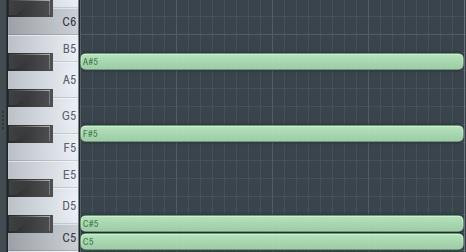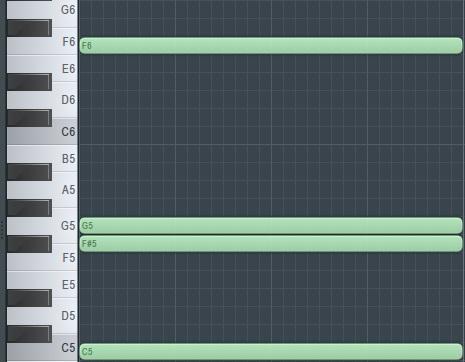Search the Community
Showing results for tags 'theory'.
-
I've really struggled to get my head around music theory - the way it's currently presented - since I started composing last summer. So, I've been giving some thought as to alternative ways of presenting it that might make it more accessible to new untrained composers, especially those who use DAWs and samples rather than manuscript. This video is meant as an exploration only - not suggesting better or worse approaches, or taking a position - only considering alternatives that could work for some people. Hope it's helpful. https://youtu.be/O_SSqvaVKDA?si=QXuksfXovuawS3Tf
-
So, I've been binge watching a lot on music history and the development of compositional styles from pretonal to modern day. I came across these interesting lectures by Leonard Bernstein -yes, the great conductor and composer from the latter half of the 20th century. To add some context of my interest in this stuff.... these lectures were done in 1973 -just 7 years before my birth! So, they are still quite current within the musical discussion. To sum it up: most composers see a dichotomy of crisis within the 20th century that has continued into the 21st century. As Bernstein states within these lectures, this led to a split in aesthetics with Stravinsky on one side and Schoenberg on the other. We see this split today (despite Stravinsky's later adoption of serial technique late in his life). Bernstein also, rightly, predicts an 'age of eclecticism' in music. His prediction -which does appear to have come true- isn't coupled with any discussion of whether it is a positive or negative addition to our high art form. Here's the link! Let the discussion begin!
- 32 replies
-
- 1
-

-
I’m working in an AP Music Theory book and have a question that someone else with a better knowledge of music theory will probably be able to answer. In my book when talking about many things they use the four voice types as examples, but I write for instruments and don’t know which instrument would go with which voice type. Like if I’m writing for flute, clarinet, trumpet, and alto saxophone (this is just a random example), how would I know which instrument would go with which voice type and get the melody? I thought that maybe it was the instrument’s range but I’m not sure. Thanks
-
Our music notation system is built around the diatonic scale, but could we build it around a different scale, like the pentatonic scale? And what would that change? That's what I dive into in this video, if you'd like to check it out: The tl;dr here is that, when you change to a pentatonic notation system, the sharp/flat in that system ends up being the minor second from our diatonic system, and that leads to what I think is an inspiring new perspective for playing and composing music. In addition to providing a new perspective, it also makes a practical and audible difference when playing music in tunings where are enharmonic equivalents are no longer equivalent, since alterations of the pentatonic scale by the pentatonic sharp/flat (the diatonic minor second) will actually sound different than alterations of the scale by the diatonic sharp/flat (the diatonic augmented unison). In the video, there's a short boogie-woogie style composition that I wrote in 19-tone equal temperament with this pentatonic system in mind. What do you think about the results, and the idea of a pentatonic notation system itself? Would you try to write something using this notation system if a notation program made it available to you? I'd love to hear any thoughts, and please feel free to ask any questions about the video, and the initial theory I breeze through. (I had to gloss over that stuff to get to the meat of the video, and I do realize it ends up being a bit of a bombardment in the beginning there.)
-
- pentatonic scale
- notation system
-
(and 4 more)
Tagged with:
-
Good hour good folks! This is a very very crucial question for me, so thank you in advance. I went ahead and tested the interval ranking (list of intervals from most consonant to dissonant in form of ratios) by building a chord with the 3 most dissonant intervals within the ranking which are Tritone - ratio (23:16) Minor 2nd - ratio (15:16) Minor 7th - ratio (9:16) Image Description (Root to tritone - root to minor 2nd - root to minor 7th.) As seen in the image above, according to the interval ranking there is no chord more dissonant than this. Now, the testing.. In the image above, if i were to take the Minor 7th interval (A#) and reposition it to the note (D), the chord will have now become significantly more dissonant than in it's original position. This would disprove that my use of the interval ranking was correct, as the chord is now more dissonant. Maybe.. i positioned the most dissonant intervals all relative to the root as opposed to placing them relative to the note below each successive interval, so lets visualize this updated structure below. Image Description (Root to tritone - tritone to minor 2nd - minor 2nd to minor 7th.) As seen in the image above, the intervals are now structured not relative to the root but by consecutive notes. Again, the testing.. In the image above, If i again, take the minor 7th (F) and reposition it to (G#), the chord is now more dissonant than in its original "supposedly max dissonance" chord structure shown above. ---------------------------------------------------------------------------------------------------------------------------------------------------------------------------- "Question Section" Question 1. In my second image example, did i utilize the interval ranking adequately? When stacking intervals, do you use intervals based off the note before the successor note or do you stack intervals all relative solely to the root? Question 2. In my second image example, i used the most dissonant intervals available within the interval ranking but yet when i shifted the minor 7th (F) and re-positioned it to (G#), the chord was more dissonant. So my 2nd approach to stacking intervals still doesn't prove to work effectively. What is the process behind this and how should intervals be stacked in a chord? Question 3. If we reference the second image and and focus on the F# and G notes right beside each other, they're pretty dissonant. If i push the G up or down an octave and leave the F# where it is, now they aren't as dissonant. Is the reason for this because when the two notes are beside each other in the same octave, their waves are both traveling at a similar rate but when one note is brought up an octave, because the frequency of that note has been doubled, now the two notes waves line up more as the higher octave note is now traveling twice as fast as the note an octave below? Question 4. If i stack intervals as explained in my second image example, which is by selecting my desired interval ratios relative to the note previous to it in my chord as opposed to the root, do the successive notes after my new note play a direct role "interval relationship wise" with the previous notes or does it just boil down to the note before the new note? Let me elaborate.. If i have C and E (Major 3rd) and then add a G on top of that, the C to E is a Major 3rd and the E to G is Minor 3rd. But in that chord structure the C to G could be considered a Perfect 5th and now the G is no longer a Minor 3rd interval within the chord. Which is right and which is wrong? Especially when more notes are added, the intervals can have multiple perspectives. So the questions boils down to, do we only focus intervals relative to the note before the new note added? If not, it would be a mess. Thank you very much guys!
-
Here is my piece for the theory course 302a Bartók. The inspiration for this piece is, of course, Bartók's Mikrokosmos, but I was also inspired by Friedrich's Der Wanderer über dem Nebelmeer, which is shown below:
- 5 replies
-
- 1
-

-
- bartók
- assignment
- (and 10 more)
-
The answers to some of the questions are on the bottom of this post. Italicized questions should get a short writing response (a sentence or two) along with the composition portion. 1. View the attached score and listen to a recording. 2. The first step when analyzing a piece is to discern its form. Attempt to discern the parts. Then, look for how many phrases are used in each section. What makes a section more similar or dissimilar to another? 3a. The whole step interval (G & A) bounced around the bottom of page two breaks the obvious pattern. Same with the final Piú mosso section. Why would he write it like this? Obviously it's not simply to sound "cool". 3b. Do the non-A sections have any relation to themselves? To the A sections? If so, what is it? If not, why would we write it like this? 4. In almost every section, the pitches do not fall into any pre-established scale. This is because this piece utilizes intervallic mirror technique, where the pitches are reflected exactly upon a tonic note. Your task is to find all the places where this reflection is either shifted or inexact in some way. Ponder why he would bother doing this. 5. Write a short piece for solo piano using mirroring and a recurring A section with changes. Your piece should include a process, that is, a theme of continuously changing something in the piece by a some fixed amount, linear or exponential. 2. Systems 1-3: A Systems 3-4: B Systems: 4-5: A Systems 5-7: B' Systems 7-8: A System 9-10: B" System: 10-11: C Systems 11-13: A Systems 13-15: D (What's important here is that the A sections sound similar, but the other sections do not show any obvious similarities to considered like sections) 4. Mirror off an eighth note in second and third A. The fourth A section gradually displaces the mirror by eighth note, and changes the intervals of the left hand several times, most noticeably the E natural in the beginning. D uses a separate kind of thrown off mirror system.
-
Hi I always come to this forum to learn new thing or thing I need. Today I have question and it's very important to me. It's about Composition. Melody and Harmony. Is there a list of things to be aware of. When you write melody and harmony That make the process easy. like: Scales,Relative scale,Embellishing tones, Modes.... Borrowed chords,Secondary chords,Modulation,Cadance..... Thank you
-
I have read the works of Fux and Rameau, I am interested in writing music in the style of the baroque and the classical. Before I practice their teachings I have some questions: Apparently Bach, Mozart, Beethoven and Brahms ALL studied along the lines of Fux, and disagreed with much of Rameau's teachings. Again, considering that I am ONLY interested in writing music in the style of the baroque and the classical, should I abandon Rameau and stick only to Fux? I asked this question a month ago, but did not give as much information. Thanks.
-
So, when I first started theory I was told that retrograde (movement from a dominant function chord to a pre-dominant function chord) was strictly forbidden in common practice harmony. However, while working through Hindemith's "Traditional Harmony" I found that several of Hindemith's prescribed progressions in the exercises have retrograde progressions. So, is retrograde strictly forbidden? Are there exceptions? Am I just stupid? Discuss.
- 13 replies
-
Why do we avoid the augmented second between 6 and 7 in harmonic minor in voice leading? I always get called on this in my compositions, but I use that interval on purpose. It sounds so expressive and pulls so strongly to tonic, why avoid it? It's not like singers can't sing it now. Contemporary singers should find an augmented second very easy to sing. It isn't hard on any instrument. So why? Why do we avoid the augmented second in voice leading?
-
Hi, I'm new here, so forgive me if I'm doing something wrong. I'm writing a sonata-form movement in Romantic style (Schubert, Brahms...). I've written: 1st theme (8+8 bars), ending on i (G min) transition (G min >> Eb) 8 bars of the 2nd theme (starts at bar 57), ending on V (Bb major chord) However, I'm stuck here. :dunno: I've just moved from a classical to a romantic style, and the proportions are bigger. I know I should write something looser and more lyrical here, and it should be roughly 50-60 bars long for balance. I could use more than 1 theme (?), and perfect cadences should be used sparsely. I tend to write very "marked" self-contained themes, like the 1st one, so my initial idea was to write another 8+8 antecedent/consequent. But I can't do this, I must include more material before the V-I and the codetta. Thus, I've written some "continuations" after the 1st 8 bars ending on V, as well as a climax based on that tune, and a little codetta... I don't know how to assemble all that stuff. I've checked out tons examples, but I'm kinda blocked. Any tips? What is your experience? Thanks!! :D
- 2 replies
-
- sonata form
- sonata
-
(and 6 more)
Tagged with:
-
Hello! I'm interested in beginning to compose, especially in modern styles (a la Ligeti). However, my music theory knowledge is minimal... I can read notes and that's about it. (Except sometimes when a note has more than a couple of ledger lines :veryunsure:) Anyway, as I said, I'm into contemporary music... Ligeti, Bartok, and Yun Isang are among my favorite composers. I love listening to their music, but I usually don't get a whole lot out of it since I don't understand the concepts being demonstrated. That being said, can anyone recommend to me a good place to start (e.g. textbook, website) where I could learn music theory? Everything that I've found just explains reading music and then stops. Thanks! P.S. I'm new here... sorry if I'm putting this in the wrong spot.
- 11 replies
-
- beginner
- counterpoint
-
(and 2 more)
Tagged with:
-
I was recently told on one of my peices that I need to look more into voicing. While I have a vague idea of what this means, I was wondering if someone could give me an overview of what it is (really) and how I can get better at it. Feel free to get nerdy with it, I have Google ;) PS The song is called Silver Linings and can be found with the other band stuff. It would be great if you could listen to it; I need the views and the comments hahaha
-
I know that in major, the four leads to the three and the seven leads to the one melodically. When in minor are there still voice leadings? I understand that there's no 'right' answer to any of that, but music theoretically. Also, I vaguely recall reading about chromaticism goes back to the chord, or something like that. So say I am in major, and I've got a major four chord, does the three then lead up to the four?














